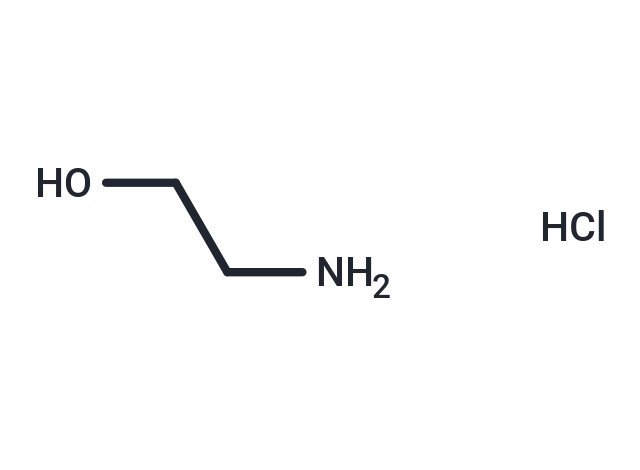Shopping Cart
- Remove All
 Your shopping cart is currently empty
Your shopping cart is currently empty

Ethanolamine hydrochloride (2-Aminoethanol hydrochloride) , a viscous, hygroscopic amino alcohol with an ammoniacal odor, is widely distributed in biological tissue and is a component of lecithin.

| Pack Size | Price | Availability | Quantity |
|---|---|---|---|
| 1 g | $29 | In Stock | |
| 1 mL x 10 mM (in DMSO) | $45 | In Stock |
| Description | Ethanolamine hydrochloride (2-Aminoethanol hydrochloride) , a viscous, hygroscopic amino alcohol with an ammoniacal odor, is widely distributed in biological tissue and is a component of lecithin. |
| Alias | 2-Aminoethanol hydrochloride |
| Molecular Weight | 97.54 |
| Formula | C2H8ClNO |
| Cas No. | 2002-24-6 |
| Smiles | NCCO.Cl |
| Relative Density. | no data available |
| Storage | keep away from moisture | Powder: -20°C for 3 years | In solvent: -80°C for 1 year | Shipping with blue ice. | |||||||||||||||||||||||||||||||||||
| Solubility Information | DMSO: 60 mg/mL (615.13 mM), Sonication is recommended. | |||||||||||||||||||||||||||||||||||
Solution Preparation Table | ||||||||||||||||||||||||||||||||||||
DMSO
| ||||||||||||||||||||||||||||||||||||

Copyright © 2015-2025 TargetMol Chemicals Inc. All Rights Reserved.